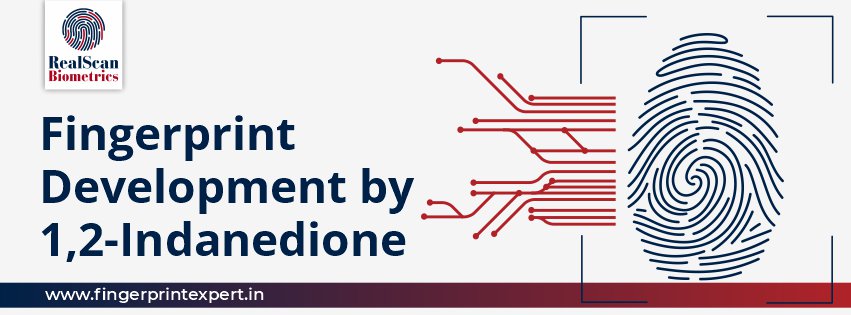After a similar molecule, 6-methyl-thio-1,2-indanedione, was discovered to make fluorescent fingerprints, researchers looked into 1,2-indanedione's fingerprint-developing properties.
Researchers were inspired to make the parent compound and several additional analogues and test their effectiveness as fingerprint reagents.
The results were comparable to DFO in that they created a pale pink-colored product that fluoresced brilliantly at room temperature.
Further research revealed that these reagents are more sensitive than other current methods and can be a cheaper alternative due to their simplicity of synthesis.
In the eight years since its discovery, 1,2-indanedione has become a staple reagent in Israeli laboratories and is being researched for application in a number of other countries.
Theory
1,2-Indanedione is a close analogue of ninhydrin and is theorized to react with amino acids in a very similar fashion.
The presence of methanol in the interaction of 1,2-indanedione with amino acids desensitizes the reagent, according to mechanistic investigations.
Indanedione, like DFO, produces a hemiketal with methanol; but, unlike DFO, this hemiketal is more stable than the parent molecule, preventing amino acid reactions.
Because 1,2-indanedione is totally converted to the less sensitive hemiketal, some researchers recommend avoiding alcohols in indanedione formulations. This lack of sensitivity in methanolic solution has not been confirmed by other studies.
Similar disagreement exists with the use of acetic acid; some authors have found that adding a little amount of acetic acid improves the results, while others have reported hazy, unclear fingerprints when using acidified solutions.
These discrepancies have been linked to the acid content of the paper produced in the authors’ various countries.
It has been confirmed that the chemical is produced via the reaction between amino acids and 1,2-indanedione.
However, this chemical does not entirely explain the coloring or fluorescence of the generated print. It hasn't been ruled out that a Ruhemann's purple equivalent could exist. More research is currently being conducted to determine the structure of the fluorescent species, which is thought to be polymeric.
Another topic of debate among authors is whether or not metal salt post-treatment improves the fluorescence of the generated fingerprint.
The different outcomes at each step of the indanedione development process indicate that environmental factors have an impact on the approach, and each research group should produce an appropriate formula for usage in its lab.
Application of 1,2-Indanedione
A single 1,2-indanedione formulation cannot be advised due to regional variations in humidity, acid content of paper, and other environmental conditions.
The 1,2-indanedione reagent can be applied to the exhibit by either immersing it in it or spraying it on it. Room temperature development is possible, however it may take 4–5 days.
As it has been established that heat treatment does not produce excessive background development, steam heat should be added to the treated fingerprints to speed up the development process.
A humidity oven (100 °C at 60% relative humidity), a steam iron, or a heat press (100 °C for 2–5 minutes or 165 °C for 10 seconds) can all be used to apply heat.
Fluorescence can be seen with a 590 nm filter and 520 nm light. A zinc salt post-treatment can be used to improve the color and luminous intensity of the produced fingerprint.
1,2-Indanedione develops more fingerprints than DFO, ninhydrin, or the DFO–ninhydrin sequence combined.
The indanedione-DFO sequence for fingerprint processing can see more latent fingerprints than 1,2-indanedione alone, and indanedione can improve ninhydrin-developed fingerprints. Ninhydrin treatment of indanedione-developed prints, on the other hand, does not provide any additional enhancement.
Finally, Wilkinson et al. had very poor results with indanedione in a research conducted across Canada.

 October 10, 2022 - BY RealScan Biometrics
October 10, 2022 - BY RealScan Biometrics
